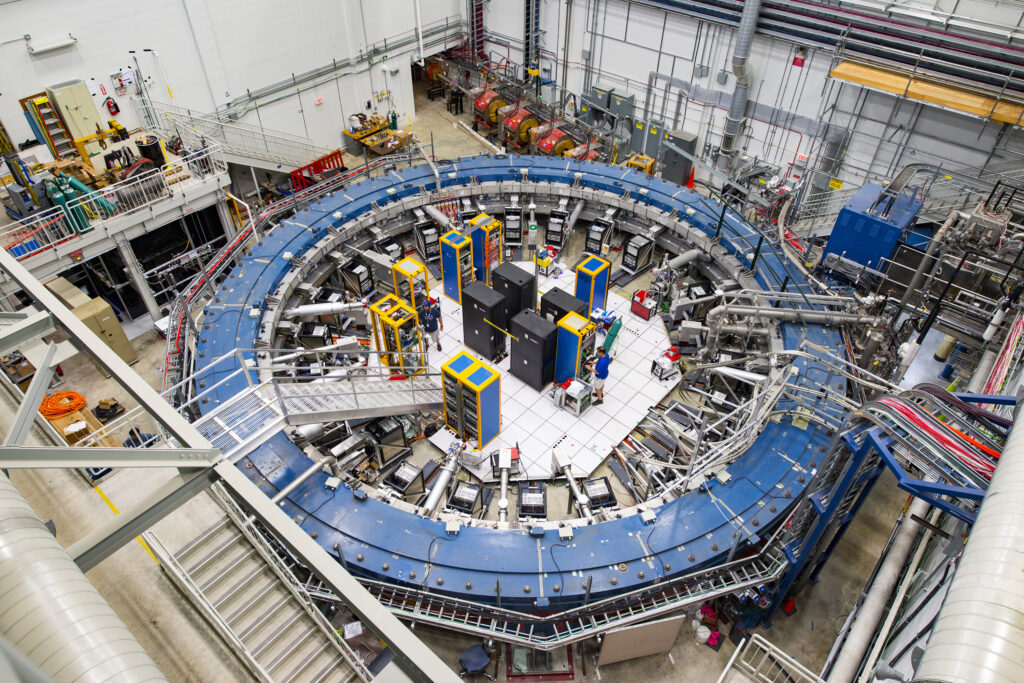An international team of scientists have carried out the most precise measurement ever of the anomalous magnetic moment of the muon. The results could point to the existence of yet unobserved particles and flaws in the Standard Model of particle physics.

This new measurements were recorded on the Muon g-2 experiment at the U.S. Department of Energy’s Fermi National Accelerator Laboratory and they have been described in a preprint submitted to Physical Review Letters.
Muon g-2 is an international collaboration between Fermilab and dozens of labs and universities in seven countries, including the UK.
The precision of this latest measurement was made possible in part by the important contributions made by engineers and physicist of the Cockcroft Institute.
The Fermilab Muon g-2 experiment first started data taking in 2018. Since 2015 when the experiment was being assembled, Prof Andy Wolski and Dr David Newton (now deceased) from Liverpool University and their PhD student Dr Alex Herrod, together with Dr Ian Bailey and two Postdoctoral Research Associates from Lancaster University, Dr Maxim Korostelev and Dr Eremey Valetov, developed start-to-end simulations of the complicated journeys the muons take through the accelerator beamlines, commencing at the muon production target and ending in the Muon g-2 storage ring where the spin precession rate of the muons is measured. They also performed simulations of the subtle effects of the electrostatic quadrupole magnets inside the ring.
Proton bunches of 8 GeV from the Fermilab recycler synchrotron are directed to a nickel-iron target producing a mix of predominantly protons, pions and muons which is collected using a lithium lens. Positively-charged particles with momenta close to the “magic momentum” of 3.1 GeV/c needed for the experiment are selected by a bending magnet. As the positive pions travel through the beamlines they decay, producing positively-charged muons with ∼95 % polarization.
The beam is then injected into the delivery ring where almost all remaining pions decay into muons while the heavier protons lag behind and are mostly removed by the kicker magnet. The beam continues through over 100 meters of beamline before entering the muon storage ring at an optimised angle.
The work the CI has done, tracking the distribution of muons and the direction of their spins through these complicated magnetic fields, is important for determining how accurately we can make the muon g-2 measurement.
Dr Bailey said: “This beautifully precise new measurement confirms that the muon has an important role in telling us about the nature of our Universe, although we don’t yet know exactly what it is telling us. The ongoing work of our colleagues in the theory community will reveal the significance of the result.”
The UK collaboration is supported by the UK Science and Technology Facilities Council (STFC), part of UK Research and Innovation (UKRI).
Fermilab is America’s premier national laboratory for particle physics research. For further information, visit Fermilab’s website.
